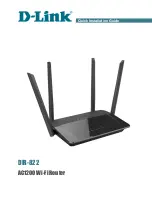
INS_CNGE11FX3TX8MS[POE][HO] Rev. 11.6.17 PAGE 60
INSTRUCTION MANUAL
CNGE11FX3TX8MS[POE][HO]
TECH SUPPORT: 1.888.678.9427
Object
Description
Aging Period
This setting applies to the following modes, i.e. modes using the Port Security functionality to
secure MAC addresses:
• Single 802.1X
• Multi 802.1X
• MAC-Based Auth.
When the NAS module uses the Port Security module to secure MAC addresses, the Port Security
module needs to check for activity on the MAC address in question at regular intervals and free
resources if no activity is seen within a given period of time. This parameter controls exactly this
period and can be set to a number between 10 and 1000000 seconds.
If reauthentication is enabled and the port is in an 802.1X-based mode, this is not so critical,
since supplicants that are no longer attached to the port will get removed upon the next
reauthentication, which will fail. But if reauthentication is not enabled, the only way to free
resources is by aging the entries.
For ports in MAC-based Auth. mode, reauthentication doesn’t cause direct communication
between the switch and the client, so this will not detect whether the client is still attached or not,
and the only way to free any resources is to age the entry.
Hold Time
This setting applies to the following modes, i.e. modes using the Port Security functionality to
secure MAC addresses:
• Single 802.1X
• Multi 802.1X
• MAC-Based Auth.
If a client is denied access - either because the RADIUS server denies the client access or
because the RADIUS server request times out (according to the timeout specified on the
“Configuration»Security»AAA” page) - the client is put on hold in the Unauthorized state. The
hold timer does not count during an on-going authentication.
In MAC-based Auth. mode, the switch will ignore new frames coming from the client during the
hold time.
The Hold Time can be set to a number between 10 and 1000000 seconds.
RADIUS-Assigned
QoS Enabled
RADIUS-assigned QoS provides a means to centrally control the traffic class to which traffic
coming from a successfully authenticated supplicant is assigned on the switch. The RADIUS
server must be configured to transmit special RADIUS attributes to take advantage of this feature
(see RADIUS-Assigned QoS Enabled below for a detailed description).
The “RADIUS-Assigned QoS Enabled” checkbox provides a quick way to globally enable/
disable RADIUS-server assigned QoS Class functionality. When checked, the individual ports’
ditto setting determine whether RADIUS-assigned QoS Class is enabled on that port. When
unchecked, RADIUS-server assigned QoS Class is disabled on all ports.
RADIUS-Assigned
VLAN Enabled
RADIUS-assigned VLAN provides a means to centrally control the VLAN on which a successfully
authenticated supplicant is placed on the switch. Incoming traffic will be classified to and
switched on the RADIUS-assigned VLAN. The RADIUS server must be configured to transmit
special RADIUS attributes to take advantage of this feature (see RADIUS-Assigned VLAN Enabled
below for a detailed description).
The “RADIUS-Assigned VLAN Enabled” checkbox provides a quick way to globally enable/disable
RADIUS-server assigned VLAN functionality. When checked, the individual ports’ ditto setting
determine whether RADIUS-assigned VLAN is enabled on that port. When unchecked, RADIUS-
server assigned VLAN is disabled on all ports.
















































